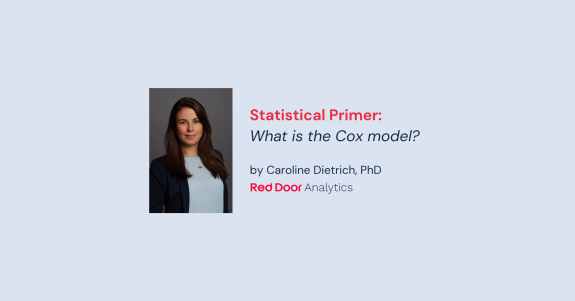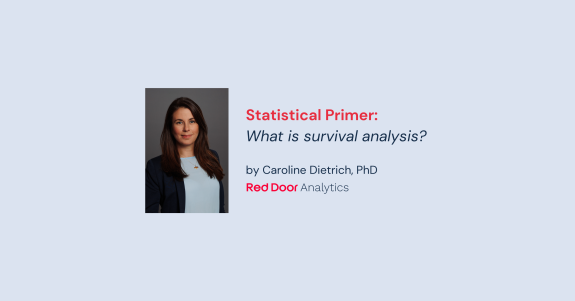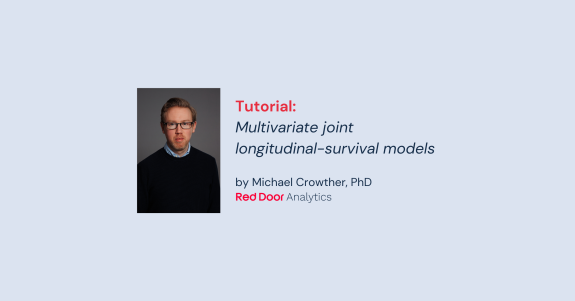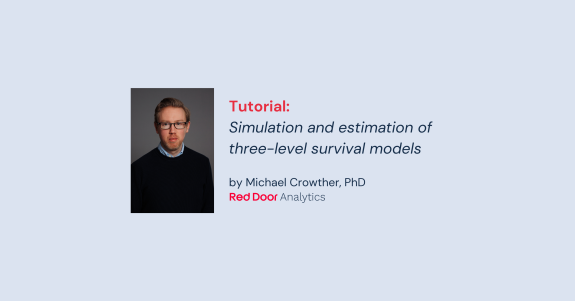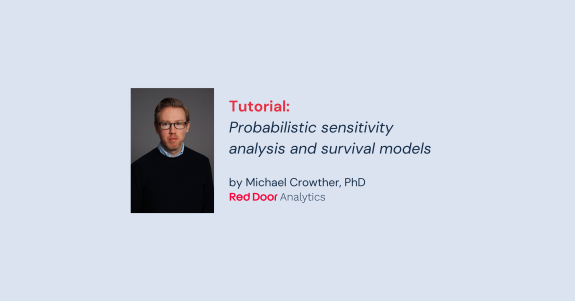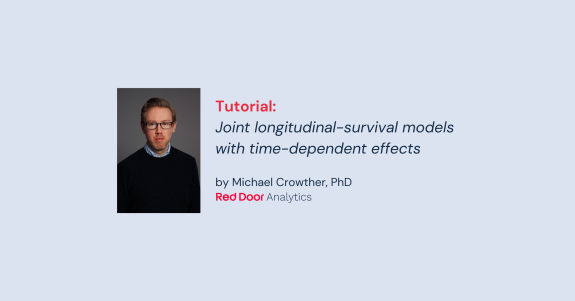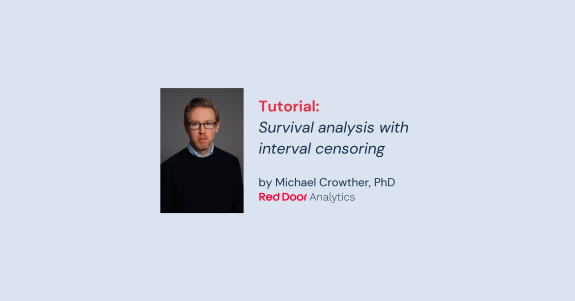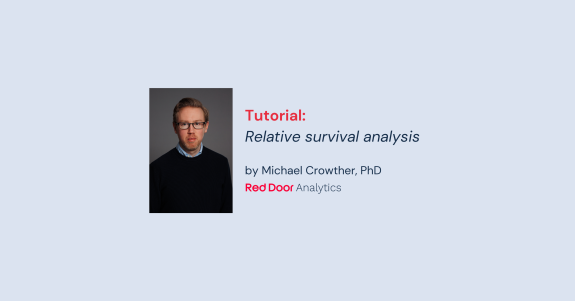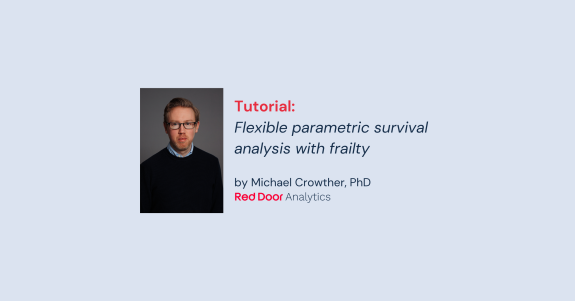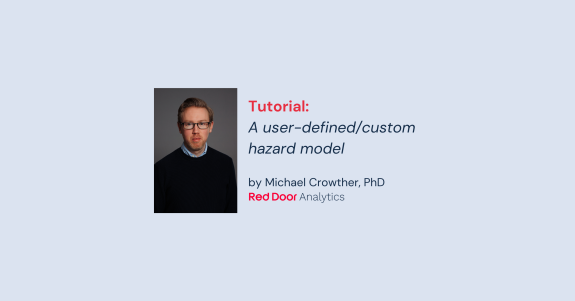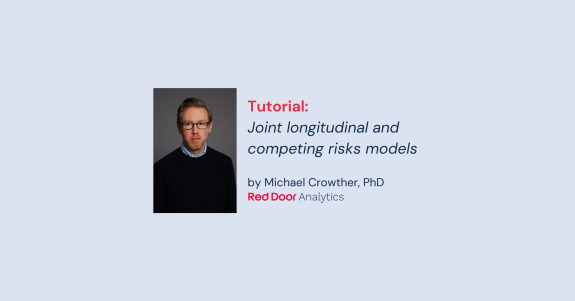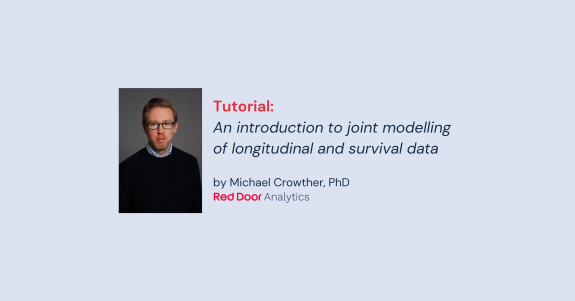Online and in-person training courses led by experienced and research active instructors
TRAINING COURSES
Scroll Down

See also our freely available courses & materials
Statistical Primers
What is the Cox model?
The Cox model The Cox model, also known as the proportional hazards model, is a popular statistical tool used to analyse survival data. It was developed by British statistician Sir David Cox, and published in 1972. It has gained popularity largely by avoiding making parametric assumptions about the shape of the baseline rate in a […]
Read more Statistical Primers
What is survival analysis?
Survival analysis is a statistical method used to analyse the time until an event of interest occurs. The key feature of survival analysis is that the outcome has two dimensions: – an event indicator (yes/no), and – the time spent at risk for the event All survival analyses require precise definitions of start and end of […]
Read more Tutorials
Multivariate joint longitudinal-survival models
Joint longitudinal-survival models have been widely developed, but there are many avenues of research where they are lacking in terms of methodological development, and importantly, accessible implementations. We think merlin fills a few gaps. In this post, we’ll take a look at the extension to modelling multiple continuous longitudinal outcomes, jointly with survival. For simplicity, I’ll concentrate […]
Read more Tutorials
Simulation and estimation of three-level survival models: IPD meta-analysis of recurrent event data
In this example I’ll look at the analysis of clustered survival data with three levels. This kind of data arises in the meta-analysis of recurrent event times, where we have observations (events or censored), k (level 1), nested within patients, j (level 2), nested within trials, i (level 3). Random intercepts The first example will […]
Read more Tutorials
Probabilistic sensitivity analysis and survival models
Today we’re going to take a little look into probabilistic sensitivity analysis (PSA), and how it can be implemented within the context of survival analysis. Now PSA is used extensively in health economic modelling, where a particular parameter (or parameters) of interest, are altered or varied, to represent different scenarios and levels of variation. We […]
Read more Tutorials
Joint longitudinal-survival models with time-dependent effects (non-proportional hazards)
In this post we’ll focus on how to model time-dependent effects (non-proportional hazards), specifically within a joint longitudinal-survival model. Now joint models are becoming commonplace in medical research, but as always, the fundamentals still matter, and indeed are often ignored. We’re going to look at how to account for time-dependency in both baseline covariates in […]
Read more Tutorials
Survival analysis with interval censoring
Interval censoring occurs when we don’t know the exact time an event occurred, only that it occurred within a particular time interval. Such data is common in ophthalmology and dentistry, where events are only picked up at scheduled appointments, but they actually occurred at some point since the previous visit. Arguably, we could say all survival data […]
Read more Tutorials
Relative survival analysis
Relative survival models are predominantly used in population based cancer epidemiology (Dickman et al. 2004), where interest lies in modelling and quantifying the excess mortality in a population with a particular disease, compared to a reference population, appropriately matched on things like age, gender and calendar time. One of the benefits of the approach is […]
Read more Tutorials
Flexible parametric survival analysis with frailty
This example takes a look at incorporating a frailty, or random intercept, into a flexible parametric survival model, and how to fit them in Stata. First we’ll use merlin to estimate our model, and then the more user-friendly wrapper function stmixed. More details on these models can be found in the following papers: Crowther MJ, Look MP, Riley […]
Read more Tutorials
A user-defined/custom hazard model
This tutorial will illustrate some of the more advanced capabilities of merlin when modelling survival data, but with the aim of using an accessible example. During my PhD, Paul Lambert and I developed stgenreg in Stata for modelling survival data with a general user-specified hazard function, with the generality achieved by using numerical integration to calculate the cumulative hazard […]
Read more Tutorials
Joint longitudinal and competing risks models: Simulation, estimation and prediction
This post takes a look at an extension of the standard joint longitudinal-survival model, which is to incorporate competing risks. Let’s start by formally defining the model. We will assume a continuous longitudinal outcome, $$y_{i}(t) = m_{i}(t) \epsilon_{i}(t)$$ where $$m_{i}(t) = X_{1i}(t)\beta_{1} + Z_{i}(t)b_{i}$$ and \(\epsilon_{i}(t)\) is our normally distributed residual variability. We call \(m_{i}(t)\) our […]
Read more Tutorials
An introduction to joint modelling of longitudinal and survival data
This post gives a gentle introduction to the joint longitudinal-survival model framework, and covers how to estimate them using our merlin command in Stata. A joint model consists of a continuous, repeatedly measured (longitudinal) outcome, and a time-to-event, with the two models linked by random effects, or functions of them. Let’s formally define everything we need. For […]
Read more 
